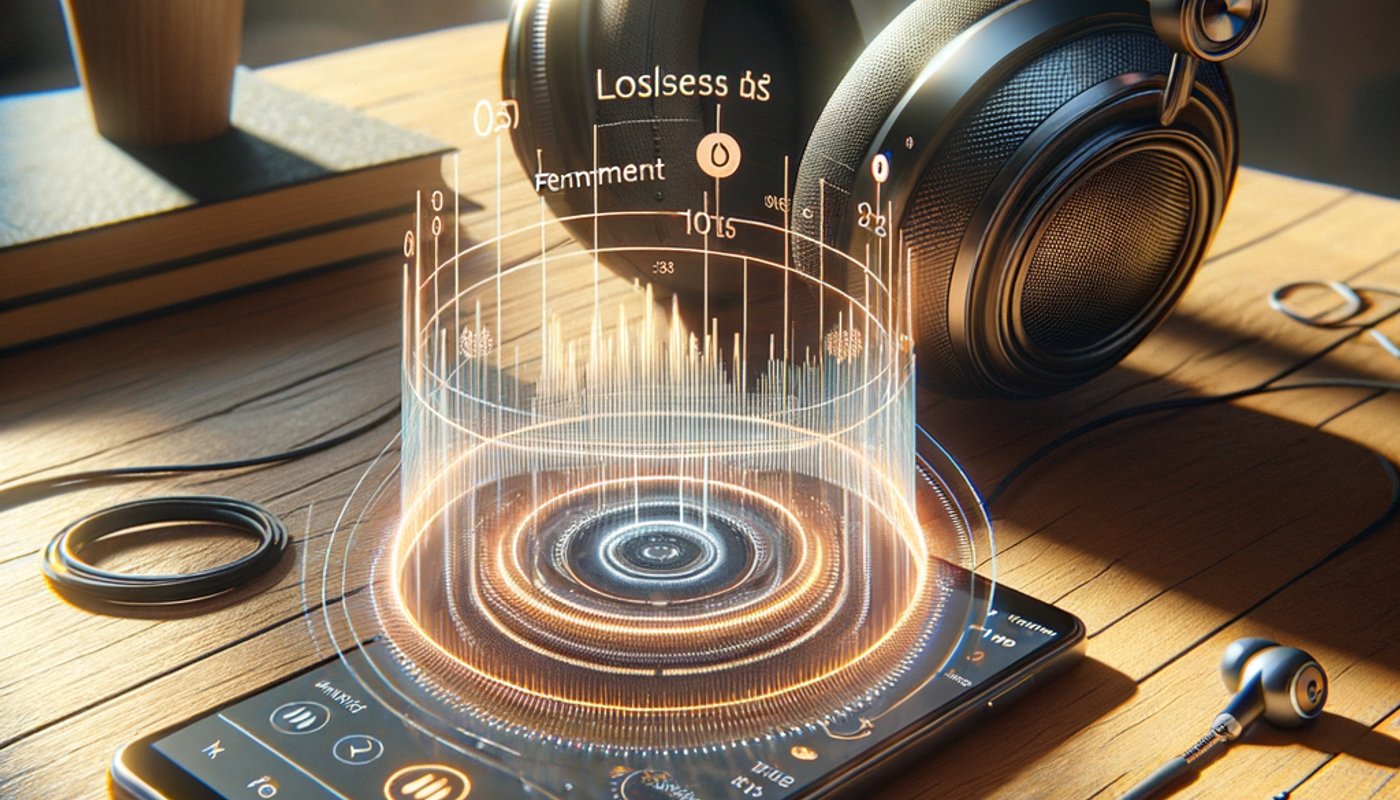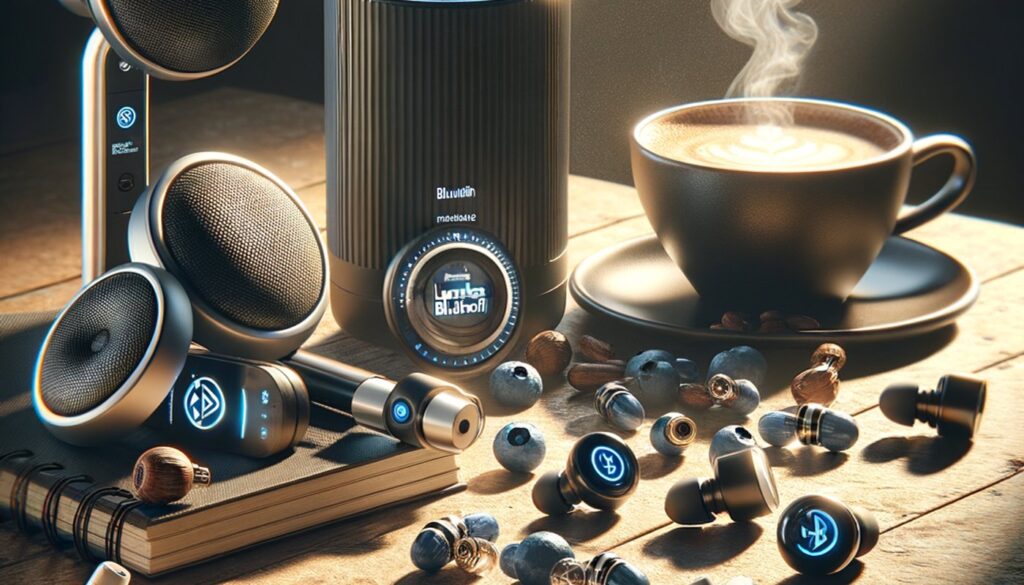Lossless Bluetooth: Unlocking True High-Fidelity Wireless Audio
I. Introduction: The End of the Wireless Compromise
For decades, serious audiophiles have looked at wireless audio with skepticism. The promise of untethered freedom always came with a hard truth: a significant compromise in sound quality. My own journey, spanning over two decades in the pursuit of genuine high-fidelity, has reinforced this reality time and again.
We consistently traded convenience for a noticeable drop in resolution and detail. Bluetooth, in particular, was often dismissed as a serious contender for anything beyond casual listening. Its limitations were well-understood.
However, an important shift is underway, one that demands the attention of discerning listeners. The rise of lossless Bluetooth codecs is fundamentally altering this long-standing dilemma. It’s time to pragmatically assess what this means for true high-fidelity wireless audio.
II. The Wireless Wall: Understanding Lossy Bluetooth’s Limitations
A. What Exactly is ‘Lossy’ in Audio?
To grasp the significance of lossless Bluetooth, we must first understand its predecessor. Most Bluetooth audio, for years, has relied on ‘lossy’ codecs.
This means that during transmission, parts of the original audio data are permanently discarded to reduce file size. Think of it like taking a high-resolution photo and saving it as a low-quality JPEG; you can’t get the original information back.
This compression was a necessity for early Bluetooth’s limited bandwidth. It allowed for stable wireless connections, but at an undeniable cost to fidelity.
B. The Common Codecs and Their Compromises
Codecs like SBC (Subband Coding) and AAC (Advanced Audio Coding) are ubiquitous. SBC is the baseline, often the least efficient, resulting in noticeable data loss and a constrained sound.
AAC offers a step up, particularly for Apple devices, providing a better balance of compression and sound quality. However, it is still inherently lossy, meaning it can’t perfectly replicate the original source.
Qualcomm’s aptX family (aptX, aptX HD) pushed boundaries for Android users, delivering higher bitrates. Even these, while superior to SBC, still employed lossy compression techniques to fit within Bluetooth’s bandwidth limitations. They offered ‘near CD-quality’ but never true CD-quality without compromise.
LDAC, developed by Sony, pushed the envelope further with variable bitrates up to 990 kbps. At its highest setting, LDAC could approach high-resolution audio, but it still used an encoder that was lossy. Achieving its maximum performance was often challenging due to environmental factors, frequently downshifting to lower, more compressed bitrates in real-world use.
The common thread among all these was the fundamental compromise: convenience at the expense of audio data. Serious audiophiles were right to be skeptical. This brings me to my outlook on the future of high-resolution wireless audio, where this problem has been a consistent barrier.

III. The Breakthrough: What Lossless Bluetooth Changes
A. Defining True Lossless Audio Transmission
Lossless Bluetooth is exactly what it sounds like: it transmits audio data without any permanent information loss. The audio stream arriving at your headphones or speakers is an exact digital replica of the source file. No data is thrown away, no details are irrevocably sacrificed.
This means a CD-quality WAV file, for example, transmitted via a lossless Bluetooth codec, will arrive as an identical CD-quality WAV file on the other end. This is a crucial distinction from ‘near lossless’ or ‘high-res capable’ lossy codecs.
The goal is to maintain the integrity of the original recording, preserving all the nuances, dynamics, and transient information. This is where the pragmatic assessment begins to get interesting for discerning listeners.
B. The New Era of Lossless Codecs
The industry has been working to overcome Bluetooth’s bandwidth limitations for some time. The real shift came with the introduction of new codecs designed specifically for lossless transmission. aptX Lossless, part of the broader aptX Adaptive platform, is a prime example.
This codec is engineered to deliver CD-quality 16-bit/44.1kHz audio over Bluetooth without any data loss. It achieves this through advanced compression algorithms that manage to fit the full CD data rate within the available wireless bandwidth. This is a genuine technological leap.
Other advancements like LC3plus, particularly in its High-Resolution mode, are also paving the way for more efficient and higher-fidelity wireless transmission, offering near-lossless or highly transparent lossy performance, with future potential for full lossless applications.
C. Technical Realities: How It’s Achieved
Achieving lossless transmission over Bluetooth is a complex engineering feat. It involves a combination of highly efficient data compression techniques that are reversible (meaning no data is truly lost, just repackaged), robust error correction, and adaptive bitrate management.
The codec intelligently scales the bitrate based on the wireless environment to maintain a stable connection, prioritizing lossless delivery when conditions allow. When bandwidth is constrained, it will dynamically adapt, but the core principle is the preservation of data.
This adaptability is key to making lossless Bluetooth a practical reality for everyday use. It ensures a consistent, high-quality connection even in less-than-ideal circumstances.
IV. The Audiophile’s Perspective: Real-World Impact and Expectations
A. What an Audiophile Truly Hears
For years, the audiophile ear could easily distinguish between a wired connection and a Bluetooth stream. The tell-tale signs of lossy compression included a narrower soundstage, dulled transients, reduced micro-dynamics, and a general lack of air and refinement. It sounded ‘flat’ or ‘compressed.’
With true lossless Bluetooth, these limitations largely vanish. The soundstage opens up, revealing precise instrument placement and a sense of depth previously absent. Transients become sharper, giving percussion instruments their natural snap and decay.
Micro-details that were once masked by compression artifacts now emerge, adding texture and realism to the music. The overall presentation becomes more natural, dynamic, and engaging, moving beyond mere convenience to a truly uncompromised wireless sound experience. This mirrors the impact Wadia had on early digital audio, fundamentally changing perceptions.
B. Ecosystem Requirements: The Pragmatic Truth
It’s important to be pragmatic about adopting this technology. Lossless Bluetooth isn’t a magical update that transforms all existing devices. For you to experience true lossless audio, both your source device (smartphone, digital audio player, computer) and your receiving device (headphones, speakers) must explicitly support the specific lossless codec.
For example, to benefit from aptX Lossless, your phone needs to send it, and your headphones need to receive and decode it. Mismatched components will revert to the highest common lossy codec, such as aptX Adaptive (which contains a lossy mode) or even SBC. This is a critical point that marketing messages often gloss over.
Before investing, verify the specific codec support across your entire audio chain. Otherwise, you’re not getting the full benefit of this advancement.
C. Moving Beyond Convenience to Uncompromised Sound
The shift to lossless Bluetooth signals a genuine paradigm shift. It’s no longer about accepting a compromise for the sake of wireless freedom. It’s about having the best of both worlds: the unencumbered experience of wireless connectivity combined with the detailed, uncompressed sound quality that serious listeners demand.
This is not just an incremental improvement; it’s a fundamental change in what wireless audio can achieve. It removes a significant barrier for audiophiles who have historically resisted Bluetooth for critical listening.
The technology is maturing, offering a compelling proposition for those seeking high-fidelity wireless audio. It marks a clear progression from mere convenience to truly uncompromised sound, making wireless a viable option for even the most discerning ears.
V. Conclusion: The Future is Untethered and Uncompromised
The arrival of lossless Bluetooth codecs represents a pivotal moment in the evolution of high-fidelity audio. For years, the trade-off between wireless convenience and sound quality was an accepted, if frustrating, reality for audiophiles.
With codecs like aptX Lossless, that compromise is finally being eliminated. We can now enjoy CD-quality sound without the wires, preserving the detail and dynamics that make music truly engaging. This isn’t marketing hype; it’s a tangible technological advancement.
As with any new technology, understanding the ecosystem requirements is crucial. Both your source and receiver must support these advanced codecs to unlock their full potential. However, for those willing to embrace the compatible hardware, the rewards are significant.
Lossless Bluetooth finally delivers on the promise of true high-fidelity wireless audio. It allows serious listeners to cut the cord without cutting corners on sound quality. This is a future where our music can follow us, unburdened by wires and uncompromised in its purity.



